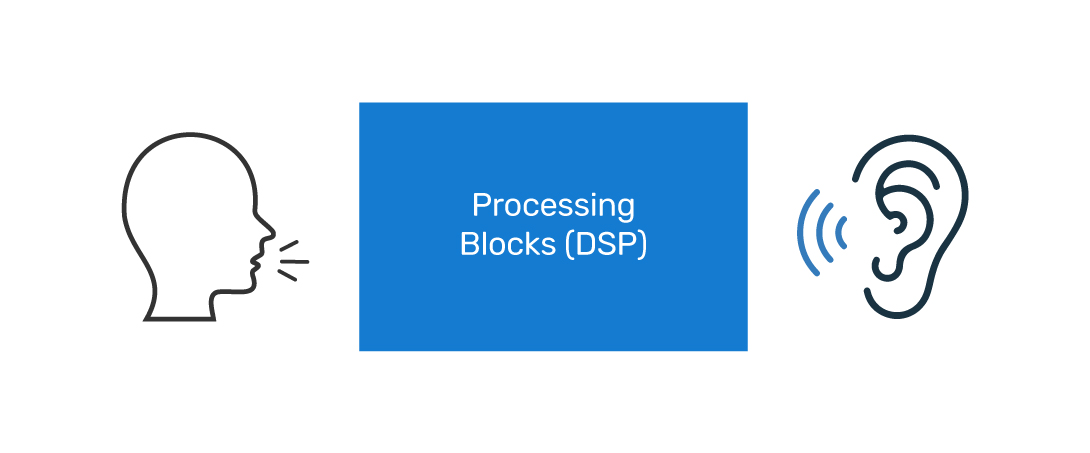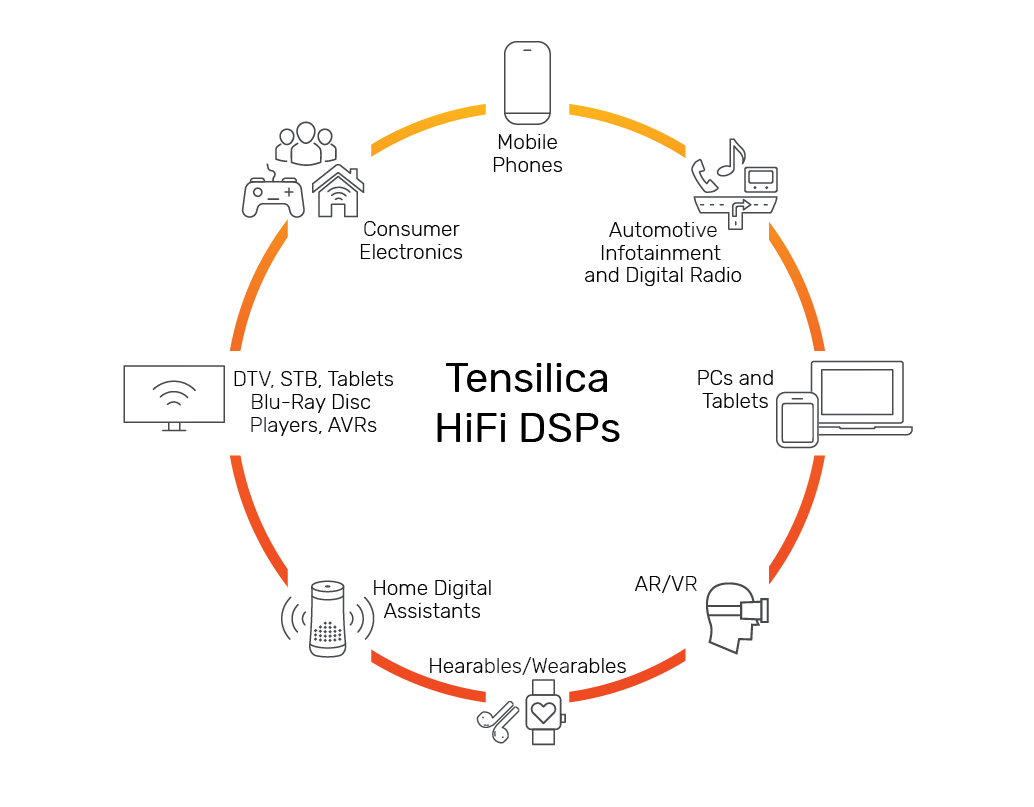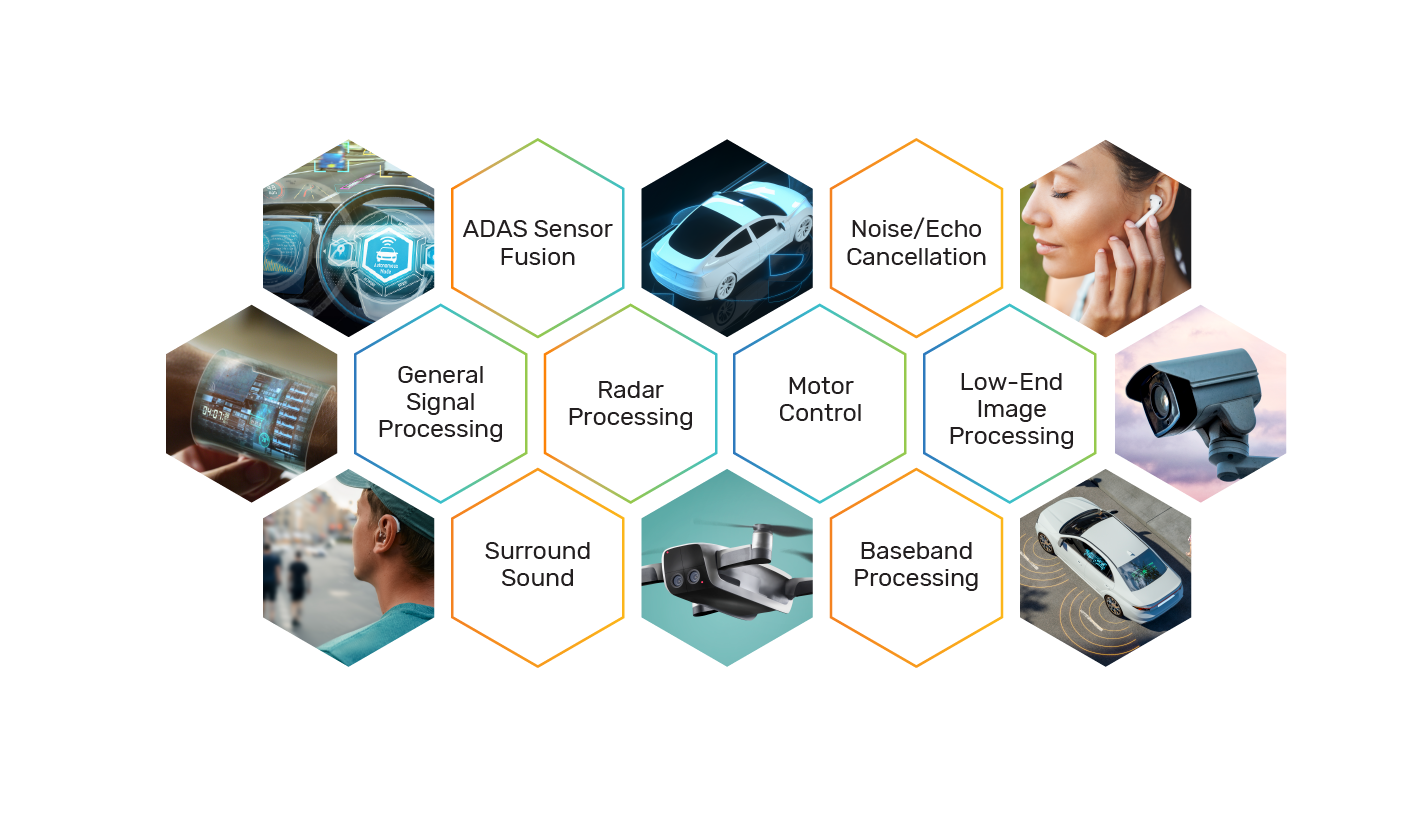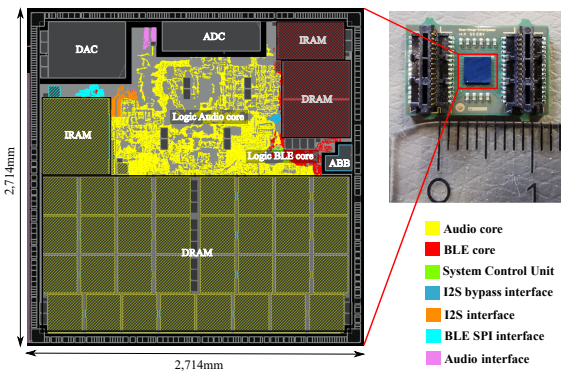White Paper
Advancing the Future of Hearing Aids with Cadence
Hearing, one of the fundamental senses, profoundly affects our ability to communicate, engage with our environment, and maintain connections with others. Despite the long-standing presence of hearing aids in the market, accessibility to essential hearing aids has historically lagged, leaving many individuals isolated due to untreated hearing. According to the World Health Organization (WHO), over 5% of the world's population—around 466 million—require hearing rehabilitation to address their hearing loss. This white paper delves into the changing landscape of hearing aids, the challenges in design, and how Cadence is enabling this transformation.
Overview
Hearing Loss: Clarified
Individuals with hearing capacity that is not as optimal as those with normal auditory perception— defined as hearing thresholds of 20dB or better in both ears—are considered to have hearing impairment. This condition can vary in severity from mild, moderate, severe, to profound and may affect one or both ears, leading to challenges in perceiving conversational speech or louder sounds. In audiology, the evaluation of hearing loss involves determining the sensitivity of an individual's hearing across various frequencies for each ear. This is achieved through a hearing assessment where the individual, seated within an acoustically isolated booth and equipped with headphones, responds to a sequence of auditory tones. These tones vary in frequency and intensity and are presented to each ear separately to delineate the minimum volume at which sounds are perceptible, thus mapping out the person's auditory threshold. These thresholds are then measured against a baseline—typically the hearing capabilities of a person without hearing impairment, defined around a norm of 0-10dB Sound Pressure Level (SPL). The resulting data is graphically represented on an audiogram, a critical tool that plots these thresholds about the normative values and succinctly encapsulates the individual's hearing capacity.
Hearing Aids: The Journey to the Digital Era
Throughout history, the quest to mitigate hearing loss has evolved significantly, from the primitive use of animal horns in the 13th century to the sophisticated digital hearing aids of today. In the early days, individuals with hearing difficulties resorted to crude devices such as ear trumpets, which did not amplify sound but funneled it directly into the ear, providing some relief. This method persisted for centuries until the advent of electricity and the telephone in the 19th century opened new avenues for innovation. The introduction of the carbon transmitter by Thomas Edison in 1870 marked a pivotal moment, enhancing the telephone's utility for those with hearing loss, albeit with limitations in sound quality and frequency range. The subsequent development of vacuum tube technology in the 1920s allowed for significant sound amplification, though the devices were cumbersome and not user-friendly. It wasn't until the invention of the transistor at Bell Telephone Laboratories in 1948 that hearing aids became more practical and discreet, enabling the development of devices that could be worn entirely inside or behind the ear. This technological leap spurred the proliferation of transistor hearing aids, revolutionizing the market. The transition from analog to digital technology in the late 20th century further transformed hearing aids, offering superior sound quality, customization, and the ability to connect to various electronic devices, thus enhancing the user experience markedly. Today's hearing aids are highly effective, versatile, and nearly invisible, representing a significant advancement from early attempts to address hearing loss.
How do Hearing Aids Work?
At a more advanced level, hearing aids comprise three fundamental components: a microphone (speaker), signal processing blocks, and a listener (the receiver).
Initially, sound enters the device via the microphone, which then transforms the sound waves into electrical signals. These signals are subsequently conveyed to the amplifier. The amplifier markedly enhances the strength of these signals and transmits them to the wearer’s ear through a compact speaker, facilitating clearer sound reception.
Challenges
- Appearance – bulky, form factor
- Power consumption is an essential criterion as these must always be on
- Audio quality for better user experience, we need to have better signal-to-noise ratio (SNR)
- Background noise – It should reduce background noise
To enhance user acceptance, hearing aids are undergoing significant advancements, evolving into smaller, more discreet devices that feature advanced noise-canceling capabilities to improve sound quality. Furthermore, they are designed to be highly adaptable, meeting the broad spectrum of users’ needs. While the shift towards sleeker designs is aesthetically pleasing, it introduces substantial complexities in product design. Designers face the challenges of integrating essential components, such as batteries and peripherals, into increasingly compact spaces. The integration of binaural algorithms showcases the remarkable technological progress in this field. However, leveraging neural networks to enhance the signal-to-noise ratio (SNR) demands additional memory capacity. Consequently, there is a pressing need for flexible, low-power architectures that incorporate all necessary memory and peripherals without compromising the device’s compact size.
Cadence Tensilica – Empowering Configurable Devices
Cadence emerges as a key innovator in electronic systems design, leveraging unparalleled computational insights through its Intelligent System Design approach. This strategy propels conceptual designs into tangible realities. The evolving landscape of audio, voice, and speech processing demands that designers adeptly balance performance with power efficiency, aiming to deliver engaging and immersive user experiences. Cadence® Tensilica® offers a wide range of products that help to design small, configurable devices.
In hearing aid development, the capacity to evaluate the energy efficiency of SoCs across different frequencies in real time is crucial. These applications demand cohesive, energy-efficient solutions yet still uphold high performance. The Cadence Tensilica HIFI and Fusion G family DSPs emphasize minimal power usage while providing robust performance, ideally suited for a wide range of audio and voice applications. The ecosystem supporting these DSPs continually expands, providing cutting-edge audio and voice technologies that help OEMs distinguish their offerings with innovative features like voice triggers and advanced voice recognition. With the flexibility to customize and enhance performance through additional instructions and better I/O bandwidth, Tensilica HiFi and Fusion G family DSPs offer a robust, low-energy audio solution compatible across an expansive software ecosystem for various applications and devices.
Cadence HiFi DSP Family - Cadence Tensilica HiFi DSP instruction set architecture (ISA) is highly optimized for audio, video, and speech (AVS) applications. At its core, the push for innovation in AVS processing is driven by the desire to enhance user interaction, creating devices that are not only interactive but also profoundly immersive. Adapting to the diverse requirements of the AVS domain without incurring high costs in software development and product management is challenging. Yet, the Tensilica HiFi DSP family adeptly meets these needs. The Tensilica HiFi DSP Family includes:
The HiFi 1s and HiFi 5s include ISA and features for supporting auto-vectorization by the compiler. This dramatically reduces the need for hand-optimization, improving software engineer productivity and TTM. The same source code can be used optimally across HiFi 1s and HiFi 5s without needing per-DSP optimization.
Fusion G3/G6 DSPs
Use Case: SmartHeaP - Cadence Enhances Hearing with Innovative SmartHeap SoC
In pursuit of a groundbreaking ASIP model that excels in adaptability, computational strength, and energy efficiency, Cadence has initiated a collaborative venture with distinguished entities like GlobalFoundries (GF), Hoerzentrum Oldenburg gGmbH, and Leibniz University Hannover. This collaboration has borne fruit in the form of the industry's first binaural hearing aid system-on-chip (SoC) prototype, the Smart Hearing Aid Processor (SmartHeAP). Distinguished by its programmability in high-level languages, this prototype enables the manufacture of hearing aids that adeptly amplify essential sounds while diminishing background noise.
Courtesy: SmartHeap SoC design
Built upon the robust Cadence Tensilica Fusion G6 DSP and Tensilica Xtensa® LX7 processor, along with Cadence's digital full flow and the ultra-innovative GF 22FDX platform, SmartHeAP utilizes the cutting-edge 22 nm FD-SOI (22 FDX) technology from GLOBALFOUNDRIES. This technology supports adaptive body biasing (ABB), a feature that enhances energy efficiency, permitting operations at lower voltages without degrading performance. At its core, SmartHeAP features dual ASIP architectures rooted in the Tensilica LX7 series—tailored explicitly for optimal audio processing and Bluetooth connectivity—preceding a floating-point unit to conserve energy and space.
Among its many advantages, the SmartHeAP prototype offers significant benefits to hearing aid manufacturers and users alike, including groundbreaking binaural hearing technology that maintains binaural cues for a fully immersive sound experience, enhanced compensation for hearing loss through intelligent signal processing, high processing capacity paired with minimal energy consumption for optimal sound quality and prolonged battery life, cost savings via software upgrades without hardware replacements, and a faster time to market facilitated by the ease of programming. Occupying a compact area of just 7.36 mm2, primarily dedicated to the data memory essential for audio processing, the chip operates across multiple voltage domains, ensuring steady performance and low power use in various frequencies. Extensive testing with standard hearing aid algorithms has proven the SmartHeAP to be an efficient, real-time capable platform, marking a significant advancement in the evolution of hearing aid technology.
Conclusion
As technology advances, the trend is towards smaller devices that maintain or enhance their functionality without compromising battery life or the need for additional chips and peripherals. An ongoing effort is to improve the acoustic experience in challenging environments, utilizing advanced binaural processing and leveraging neural networks for more apparent signal transmission. This requires an architecture that supports high memory demands while keeping power usage minimal, all within a sleek design. Cadence emerges as a critical player in this innovation landscape, providing a wide range of tools and IP solutions designed to push technological boundaries and benefit humanity.




